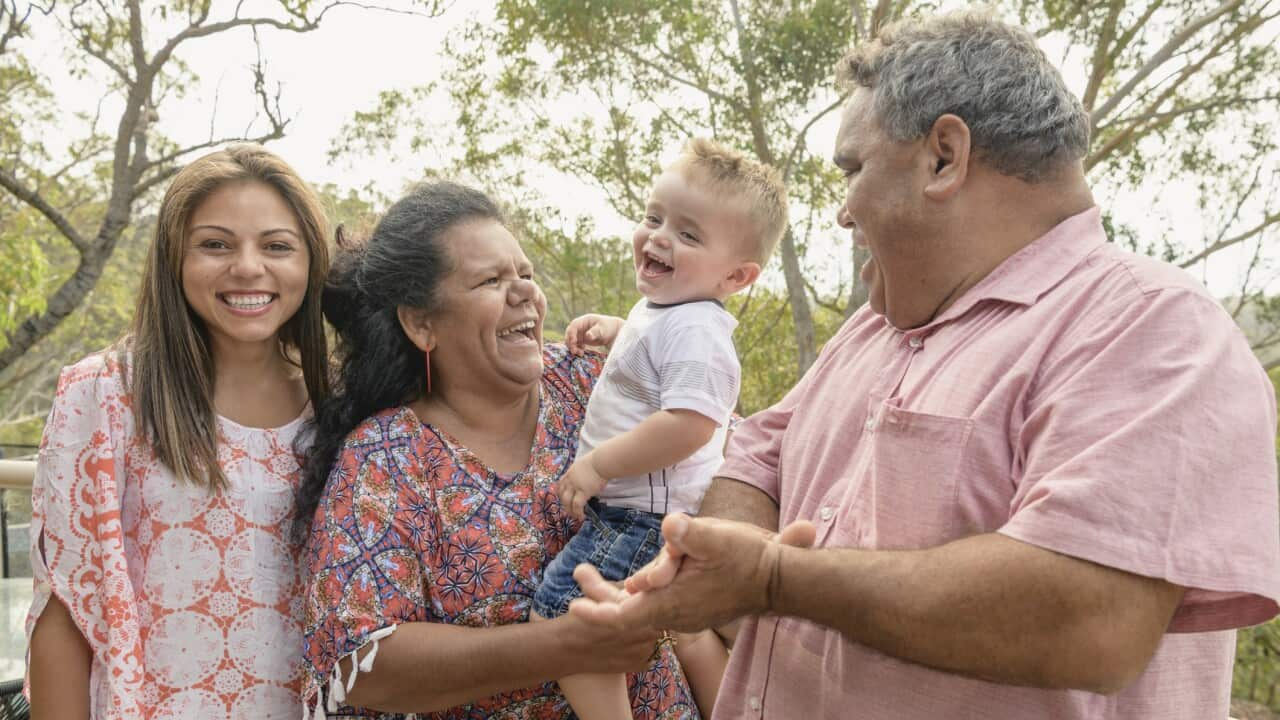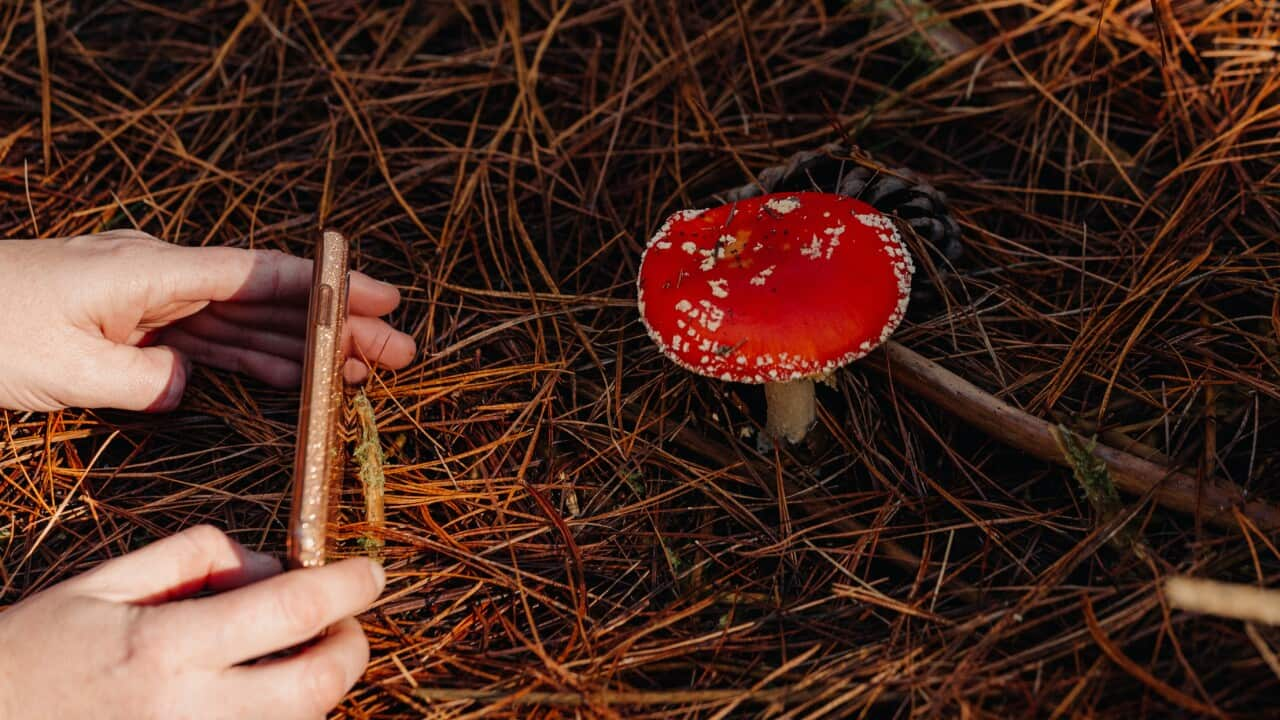Key Points
- The land is an inseparable part of First Nations peoples, forming their identity and sense of belonging.
- The connection stems from the stories that have been passed down through generations.
- One should only visit sacred sites with the knowledge of the site and its significance.
Aboriginal and Torres Strait Islander peoples have occupied Australia for at least 60,000 years, adapting to the changing landscape.
Aunty Deidre Martin is a Walbanga woman of the Yuin Nation, a respected elder and an Aboriginal discovery ranger working with the National Parks and Wildlife Service in in New South Wales.
For Aunty Deidre, land is not an entity to be owned but an inseparable part of her that needs to be respected and cared for.
We don’t and never will own the land. We have a role to protect the land. Our Country to land is what provides us with food, water, shelter, only to name a few.Aunty Deidre Martin
“Land is a terminology, but it runs throughout our veins. It’s our first breath, and it will be our last,“ she says.

Aunty Deidre Martin is an Aboriginal discovery ranger. Credit: Aunty Deidre Martin.
“When I’m travelling home from Sydney, as soon as I come around with Kiama bend, I look down the coast, and the feeling of belonging just overcomes me, and I think … I’m home,” she added.
Desmond Campbell, a proud Gurindji and Alawa-Ngalakan man from the Northern Territory, expresses similar emotions when returning to his land.
The CEO of , now based in Sydney, says he experiences goosebumps just thinking about being in his Country.
“Although we didn’t grow up there permanently, it’s as if we were there just yesterday. It’s just so familiar to us. And you just feel safe. You feel like you’re in a place that you can be who you are as an Aboriginal person,” Mr Campbell explains.
While the connection to his Country remains steadfast regardless of distance, Mr Campbell emphasises the importance of regularly returning to his ancestral land, not only for the practice of his culture and language but also for the profound spiritual connection it fosters.
“It fills me up, fills my spirit up. It allows me to be able to be living in a place like Sydney and work for an organisation like Welcome to County... I need to be maintaining my culture and my language and have that integrity. And I can only do that by going home from time to time,” he says.

CEO of Welcome to Country, Desmond Campbell. Credit: Desmond Campbell.
Stories about the land
The connection stems from the stories passed down through generations, Mr Campbell explains.
He adds that depending on which land you are from, the stories, the spirits, and the connections all differ.
“My Gurindji side, which is on my father’s side, that’s desert Country. The animals are different, the seasons are different, so the stories were different as well [to my mother’s side].”
Mr Campbell says that these stories were intertwined with knowledge and lessons about the land, like when and what to hunt and the consequences of playing with fire in the wrong season.
Bradley Hardy is a proud Ngemba, Ualarai, Kooma and Kamilaroi man and a modern-day custodian of the situated alongside the Barwon River.
He describes the river as his "blood and identification".
Mr Hardy continues to tell stories and histories of his land, working as a local guide for the .
He says, he must keep the stories alive by passing them down to the next generation.
“The tour is never about me, but about honouring my old people, sharing with the young and laying a platform for the young ones to keep sharing our history to the world, and it’s our duty to do that,” Mr Hardy explains.

Bradley Hardy and Brewarrina Aboriginal Fishing Traps. Credit: Bradley Hardy.
Understanding sacred site
The Aboriginal fish traps in Brewarrina are among the oldest human constructions in the world. They are made of rocks strategically placed in U and C-shapes, not only to herd and catch fish but also to allow some fish to bypass and continue their lifecycle, Mr Hardy explains.
It was also where many tribes came together.
It’s a sacred site, we’ve got to try and protect it. It’s mainly for our people. Our main duty is to not only tell people about them and keep it evolving amongst our young people, but for the world [to know] these are special places.Bradley Hardy
Aunty Deidre also points out the importance of knowing sacred sites and their significance before visiting them.
“They are knowledgeable places that you can’t visit until you get the knowledge, like for instance the men’s and women’s site,” she explains.

Silhouette image of First Nation Australian aboriginal people, father and son, going to hunt seafood in Cape York, Queensland, Australia. Credit: Rafael Ben-Ari/Getty Images Credit: Rafael Ben-Ari/Getty Images
Aunty Deidre says it is her responsibility to educate the community about these sacred sites, and she truly enjoys sharing her knowledge with visitors.
Delving deeper into First Nations peoples' land and understanding its significance can reveal a wealth of knowledge. However, it's crucial to approach Indigenous sacred sites with respect and seek guidance from local Indigenous communities or land councils.
“Whether it be the fish traps or other histories in different places, we want people to go and to really get the truth of our history. We want people to come out and learn about this stuff but also be mindful and respectful of our stuff too,” Mr Hardy adds.







